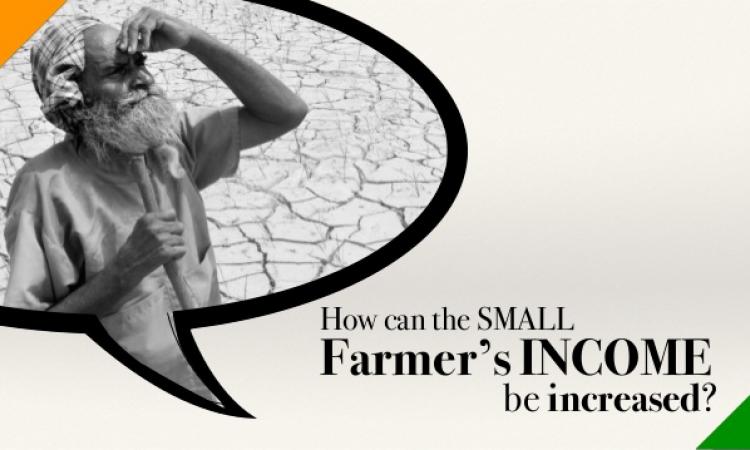
As per the agricultural statistics of 2014, nearly 430 people depend on farming in India while 263 million people are either farmers or agricultural workers. Farmers are major contributors to the growth of Indian economy and their concerns impact policies in the country.
Nearly 87 percent of farmers in India has less than two hectares of land while 69 percent does not even possess a hectare of land. These farmers are able to earn only Rs 50,000 per year or even less indicating how alarmingly low their income is. In order to supplement this meagre income, farmers rear animals and also work as labourers under MGNREGA or in cities, especially during non-farming months. Crop failure due to inadequate weather conditions and pest attacks further pose risk to their income. Moreover, the possibility of fall in crop prices at the time of harvest season causes additional worry to the farmers.
In order to earn more money, a farmer needs to grow more crops while spending less. He also needs to ensure better yield of the crops he grows. How can this be done?
How to grow more crops?
With more availability of water, a farmer is able to increase the crop yield. There are four ways to increase water availability—watershed development for increasing water efficiency in the local area; large irrigation projects for command area irrigation; groundwater extraction and other methods such as lift irrigation.
Another way to better the income is through better crop yield. For growing more crops per sowing, a farmer needs to apply several techniques like rice intensification in case of paddy cultivation; sow higher-yielding seeds; use better fertilisers, herbicides, pesticides to tackle nutrient deficiency and make of use of technologies such as drip irrigation. However, the implementation of these methods may face several constraints like knowledge transfer to farmers, affordability and very limited risk-taking ability of farmers.
How to get more yield?
Crop grown by a farmer goes through numerous intermediaries before reaching the consumer. In such a chain, a farmer may get a very small portion of the final price. Moreover, farmers have limited bargaining power and are affected by the cartelisation of agricultural produce market committees, lack of storage facilities and limited financial capacity. Even the minimum support price (MSP) is not helpful to farmers as it is effective only for wheat and paddy crops.
What are the challenges involved in growing more and earning more?
- Water and water security. There are possible solutions but technical skills and leadership to manage demand are needed at the village level.
- Buyers monopolise as farmers are unable to bargain in the market.
- Limited infrastructure for storage reduces farmers' bargaining power further.
- Inability to shift to remunerative crops due to lack of knowledge.
- Precarious finances prohibit risk-taking as failure can be a life and death situation for a farmer.
What farmers can do?
Farmers can follow collectivisation for succeeding. While it has its challenges, if farmers come together, then this single most critical step would help them to:
- optimally tap common resources like water
- cooperate and acquire knowledge for growing better price yielding crops
- share infrastructure like storage
- negotiate for better crop prices with buyers
- negotiate for better input prices with sellers
Collectivisation models include
- Cooperatives
- Political parties
- Contract farming to private players
- Producer companies (formed by the farmers themselves)
- Leasing of land.
What governments can do?
- Provide infrastructure to villages
- Curtail exploitation by Mandis
- Ensure alternate marketing mechanisms as competition to Mandis
- Enhancing agricultural knowledge creation and transfer
- More non-farming jobs to reduce pressure on land
- Provide affordable crop insurance with a quick settlement
- Quick delivery of basic services like health and education so that farmers are not crippled by debt for these
For a better understanding of the analysis, please view the presentation below.
Disclaimer: This article has been republished with permission from Ask How India. View the original article here.
/articles/how-can-small-farmers-income-be-increased